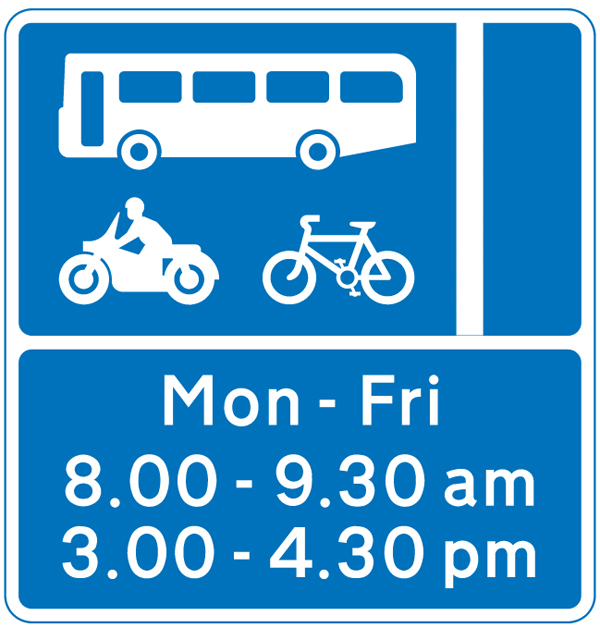The Department for Transport (DfT) has updated its guidance for councils on allowing motorcycles to use bus lanes.
The starting point for the guidance is that traffic signs give local authorities the flexibility to allow motorcycles into their bus lanes, but this must be explicitly stated in the traffic regulation order for the bus lane.
It includes updates to legislation since the last version in 2007 but maintains the existing policy that councils should allow motorcyclists – solo-powered 2-wheelers including mopeds – to use bus lanes ‘wherever it is appropriate to do so’.
The guidance notes that there are potential benefits and disbenefits of such a move, adding that the decision should be taken with care to mitigate foreseeable and avoidable risks.
It cites the following policy considerations:
- safety implications involved in restricting motorcyclists to general traffic lanes, against the possible problems of allowing motorcyclists into the bus lane
- effect on other vulnerable road users, especially pedestrians and cyclists
- possible impact on bus journey time reliability due to additional traffic in the bus lane
- reduction in congestion for other traffic on routes currently used by motorcyclists
- potential for motorcycling to become a genuine choice for road users if it is seen as a more convenient means of transport
- potential for overall improvements in transport efficiency
- local publicity to help advise road users of a policy change
The guidance also advises councils to consider the continuity of bus lane routes that admit motorcycles, warning that intermittent permission can be confusing and may pose enforcement difficulties.

The sign to TSRGD diagram 959B showing the start of a bus lane
Among safety issues that councils are advised to consider are visibility, the impact on pedestrians who may be expecting slow moving vehicles, and any potential for conflict between motorcycles and pedal cycles.
The guidance also highlights the risk or turning vehicles at junctions, noting that allowing motorcyclists into the bus lane reduces the risk of them turning across the bus lane but that there may be an increased risk of vehicles turning across the path of motorcycles.
The guidance does not specifically address the potential for coloured bus lane surfaces to have different level of grip from the main carriageway, although it does note that motorcyclists typically require smooth and non-slippery surfaces.
The Institute of Highway Engineers’ Guidelines for Motorcycling notes that ‘Road designers and traffic engineers need to understand how some design features, benign to other road users, can present a particular hazard to motorcyclists’ and that ‘factors affecting motorcyclists include skid resistance’.
The DfT guidance also recommends that councils should consult when introducing motorcyclists into a bus lane and provides advice on monitoring and enforcement.
Register now for full access
Register just once to get unrestricted, real-time coverage of the issues and challenges facing UK transport and highways engineers.
Full website content includes the latest news, exclusive commentary from leading industry figures and detailed topical analysis of the highways, transportation, environment and place-shaping sectors.
Use the link below to register your details for full, free access.
Already a registered? Login